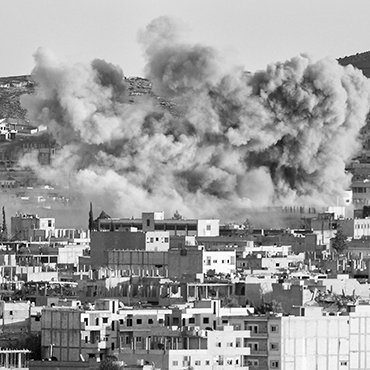UIGHURS USED AS FORCED LABOR FOR CHINA
Now some four years old, the Chinese government's current campaign of persecution of its Uighur Muslim minority is continuing apace. According to a new report from the Australian Strategic Policy Institute (ASPI), tens of thousands of Uighurs have been transferred from detention in their home region of Xinjiang in western China to work in factories under forced labor conditions. When not making goods for dozens of global brands such as Apple, Nike, and Volkswagen, the detainees in question are forced to study Mandarin and to undergo state-approved ideological training, are barred from engaging in religious practices, and are under almost constant state surveillance.
"This report exposes a new phase in China's social re-engineering campaign targeting minority citizens," the APSI study concludes, and argues that the "state-sponsored labour transfer scheme" engaged in by the PRC is having the effect of "tainting the global supply chain." The issue has, in turn, elicited a growing global outcry over corporate conduct and corporate responsibility in the plight of the Uighurs. (London Guardian, March 1, 2020)
FOR ISIS, A RESILIENT PRESENCE IN SYRIA...
Despite previous claims about the eradication of ISIS in Syria, the terror group continues to show signs of life in the war-torn nation. This has included "stepping up activities such as kidnappings for ransom, assassinations, extortion, death threats and the illegal taxations on civilians," according to one Syrian observer group. As of late March, the group was also estimated to still retain control over approximately 3,000 kilometers of land in the Syrian desert - equivalent to roughly two percent of the territory of the entire country. Notably, this swath of land contains the notorious Al-Hol refugee camp, which is home to over 68,000 residents and has been dubbed an "ISIS ministate." (Syrian Observatory for Human Rights, March 29, 2020)
...AND A SETBACK IN AFGHANISTAN
The Islamic State's Afghan chief, Abdullah Orakzai, also known as Aslam Farooqi, was apprehended by Afghanistan's intelligence services earlier this Spring. Farooqi surrendered alongside some 300 militants - a significant percentage of the some 2,000 ISIS fighters that are suspected of being active in Afghanistan. Recent significant setbacks by the terror group in Afghanistan have been attributed to U.S. and Afghan security operations in the South Asian state. How permanent these gains will be, however, depends greatly on the future of the American presence in the country - something that is now in question as a result of the Trump administration's recent truce with the militant Taliban movement. (Stripes, April 4, 2020)
ISIS SEES OPPORTUNITY AMID EUROPE'S LOCKDOWN
German authorities arrested four alleged IS militants in March on suspicion of plotting to attack American military facilities. According to the German government, these would-be terrorists "had already obtained firearms and ammunition," and one member of the group had planned to finance the attack by working as an assassin-for-hire. While the cell originally planned to attack a target in Tajikistan - the country of origin for all four men - the target subsequently shifted to a U.S. airbase in Germany for reasons that are currently unknown. (Associated Press, April 15, 2020)
A NEW CALIPHATE FORMS IN AFRICA
The Islamic State's original caliphate in Iraq and Syria may have fallen to Coalition forces, but the organization's dream of a religious state governed by sharia law still persists. In the aftermath of a recent attack in Mozambique by the group's African affiliate, known as the Islamic State Central Africa Province, or ISCAP, affiliated militants have renewed calls for the formation of a regional caliphate in East Africa. Mozambique in particular has seen a massive uptick of Islamic extremism in recent times, raising growing alarm among regional observers. (Voice of America, April 13, 2020)
Want these sent to your inbox?
Subscribe
Global Islamism Monitor No. 78
Related Categories:
Human Rights and Humanitarian Issues; Islamic Extremism; Global Health; Afghanistan; Central Asia; East Africa; Europe; Middle East

